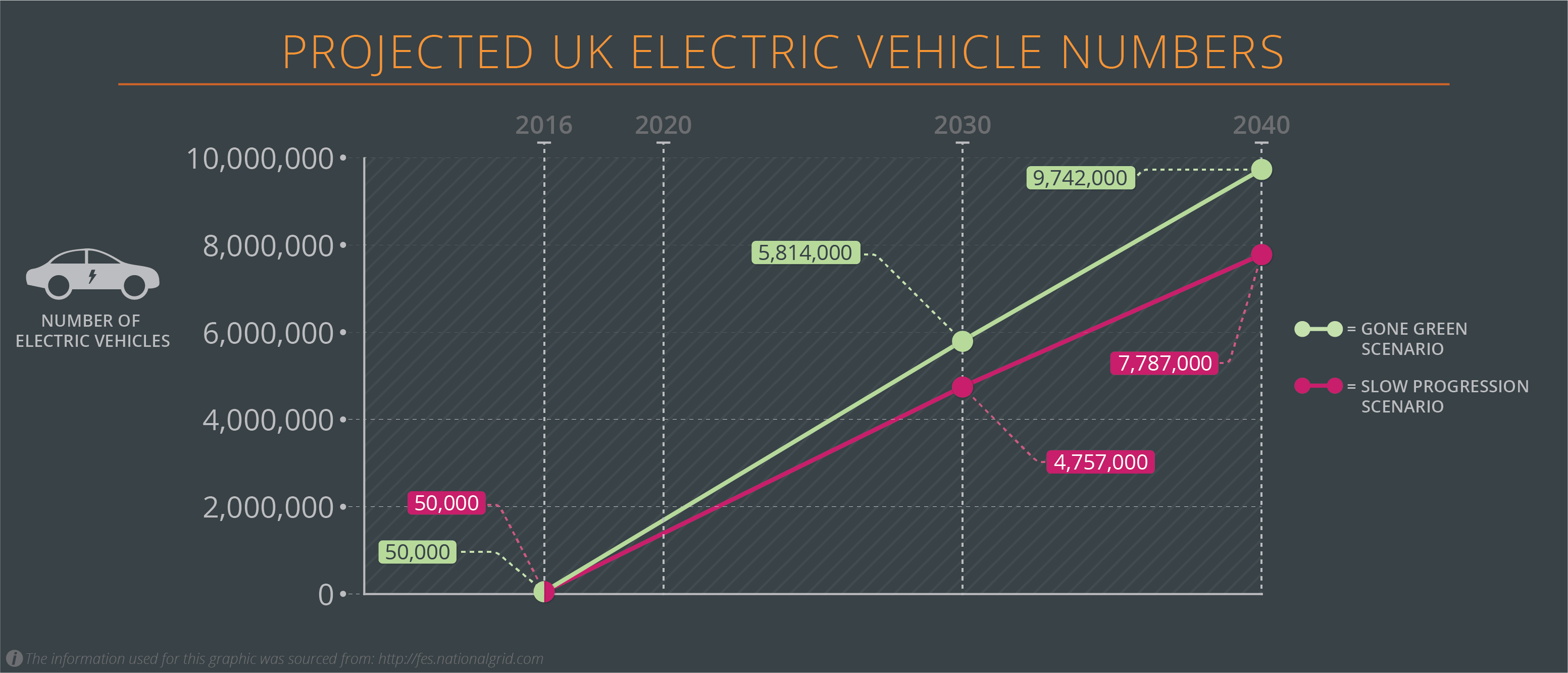For the past two weeks, we’ve taken a journey through the UK’s energy sector. We looked at how our homes and vehicles are powered, and then where in the world our energy comes from.
This time, I thought it would be fun to play a bit of “what if” with the energy sector. Nobody can predict the future, but people always seem to give it a go. Where is our energy going?
Here’s what the future of energy in the UK could look like.
Every year, the folks over at National Grid publish projections, so I decided to take a look at their Future Energy Scenarios July 2016 report.
Gone Green
The first scenario they present is an optimistic one appropriately called “Gone Green” and these are the projections:
By 2040, homes would have smart energy systems. Not only would they make sure we are being energy efficient at home though. They would also charge our electric cars – because of course we would be driving those. About a third of the British population would be driving electric cars.
In our offices, energy management would be entirely automated. Office buildings would be equipped with solar panels so companies could produce their own energy and receive payment for doing so.
Slow Progress
What if there is some sort of economic crisis in our future? Could unfortunate circumstances make renewable energy too expensive? National Grid acknowledges this possibility with its “Slow Progression” projection.
In this model, there are more electric cars and ride sharing would be a popular way to cut down vehicle emissions. We would be making steps, but it would take longer for us to reach the energy efficiency of the previous model. Below we can compare the projected number of electric cars to see how the gone green scenario is more efficient.
But this is all hypothetical fun, anything can happen. Nobody really knows.
The point is that it’s good to think about the future, we become more conscious of our own actions and how we use energy on a daily basis. And maybe that’s the most important thing.
This blog is the final part in graphically-driven series on the British energy sector. If you missed the previous post why not go back and read them now, part one was all about where our energy is coming from and part two delved into how and where out energy is made.
About the Author
Stanton was as an intern at TDL’s London studio this spring, you can read his Q&A post here. He is studying communication at Saint John’s University (Minnesota, USA). He loves writing, sport and all things music. He is also an avid avoider of sleep, except on weekends.
You can follow his blog Written Between the Lines.



